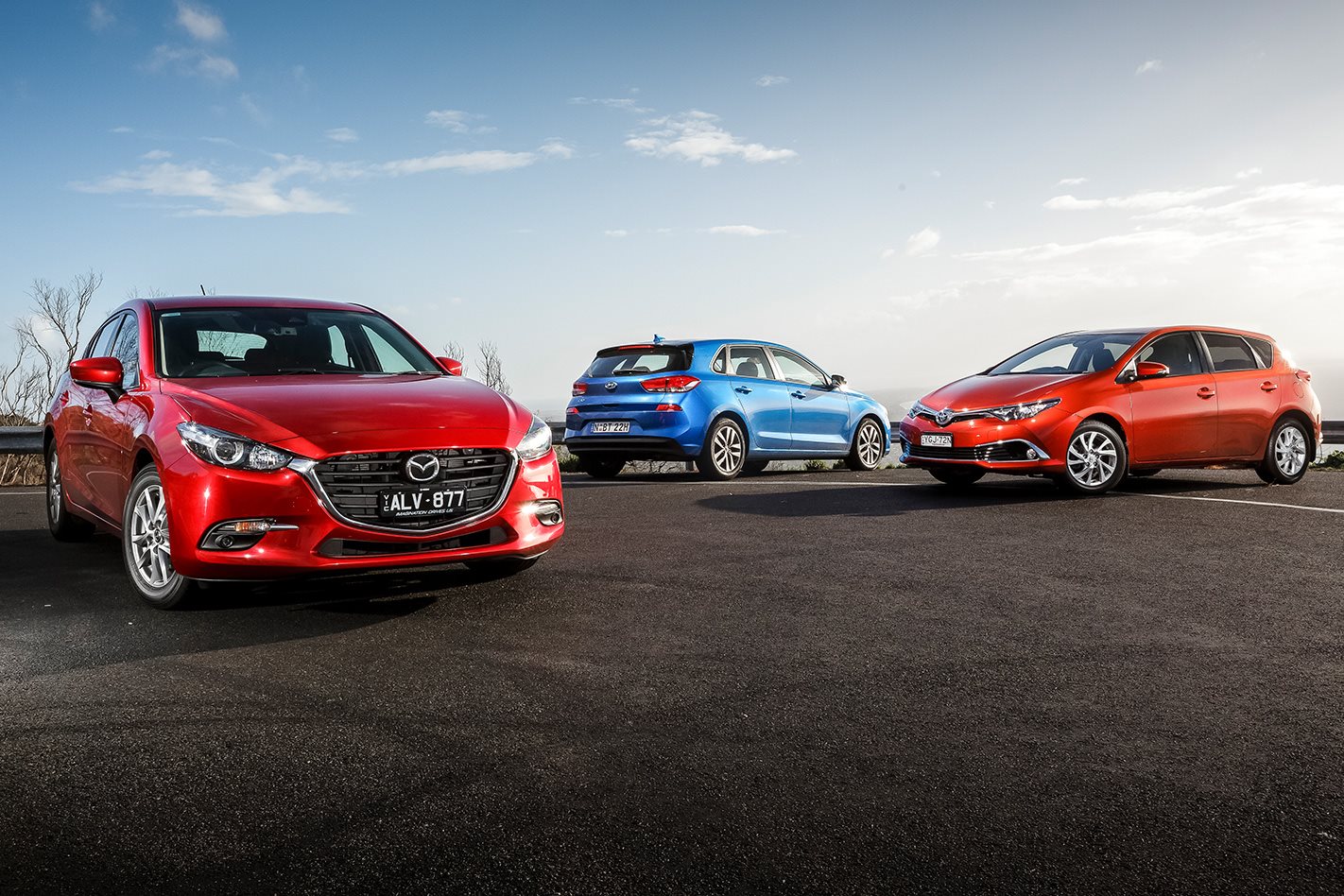
They’re the bargain basement best-sellers; the small city-friendly five-seat hatchbacks that between them account for one in every two sales in the small car segment.
But generally speaking, new-car buyers look at more than just price.
WhichCar is comparing the most popular of the popular, pitching Australia’s best-selling passenger car sold to private and bulk buyers, the Toyota Corolla, against Australia’s best-selling car bought by mums and dads, the Mazda 3. Rounding out our top three is the Hyundai i30, a car that is the newest of our lot but up here in stellar company largely on the sharp sub-$20,000 run-out pricing on the car it has just replaced.
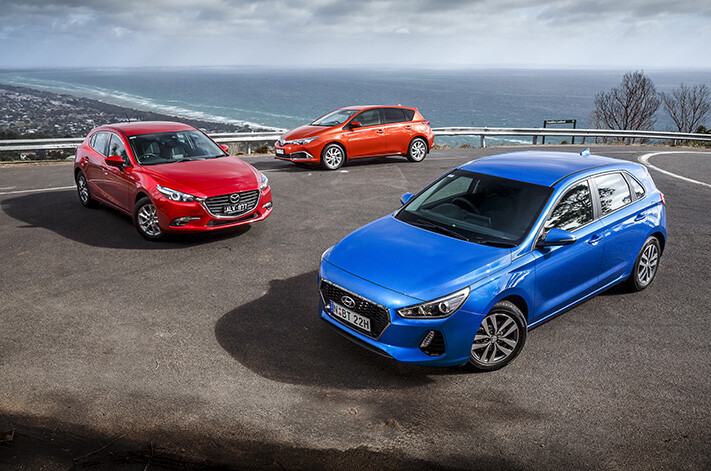
All three use automatic transmissions – a six-speeder in the case of the Mazda and the i30, and a continuously variable transmission for the Corolla – and all are priced within $1500 of each other. All have five seats, are powered by four-cylinder engines, and have a hatch – not a boot – down the back.
But, as we’re about to find out, just because you’re the most popular doesn’t always mean you’re the best.
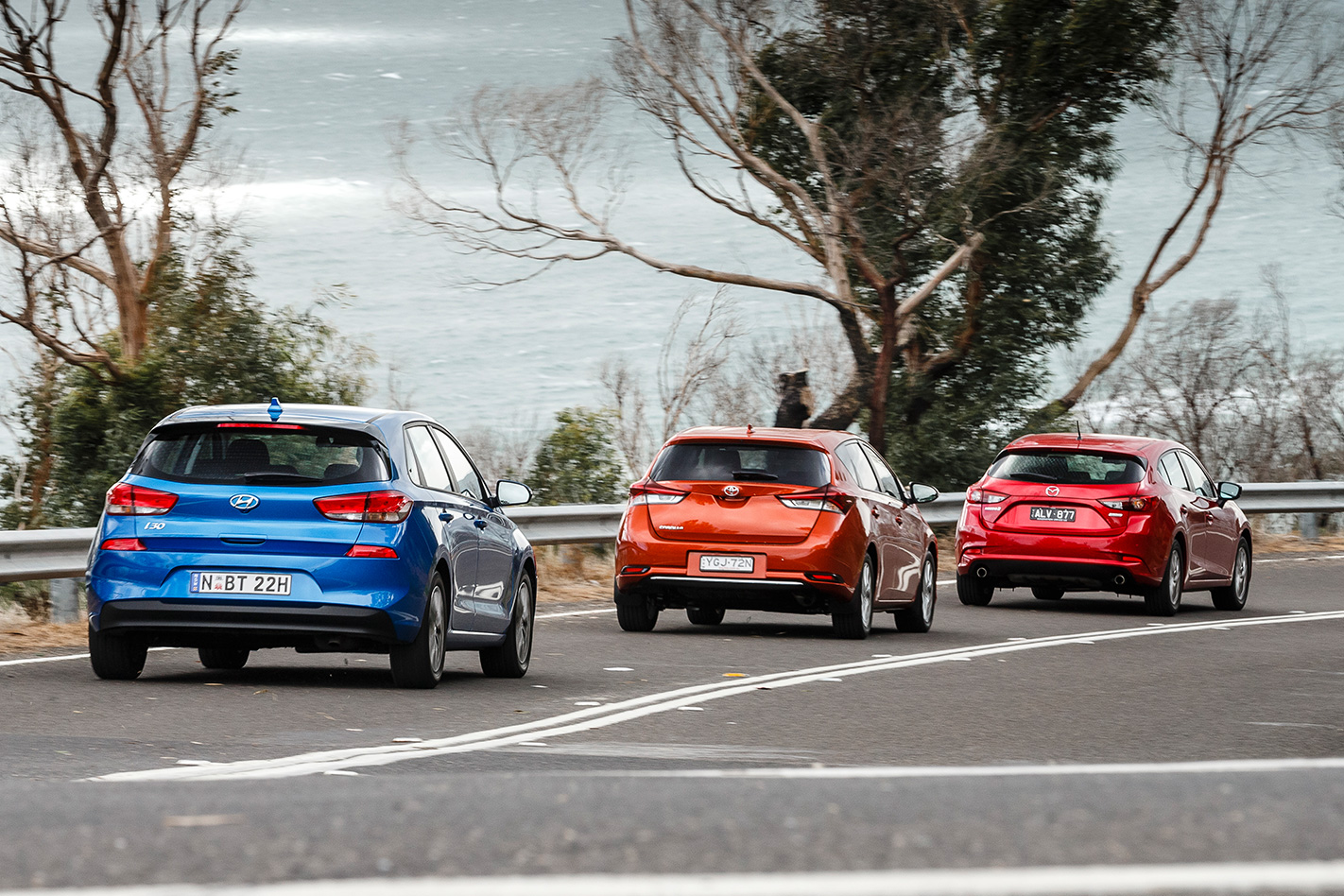
TOYOTA COROLLA ASCENT SPORT
The Toyota Corolla is currently Australia’s best-selling passenger car. You can buy one for $20,190 if you want, but every time you walk past rows of them parked up in hire car companies’ airport holding bays you’ll be happy you didn’t.
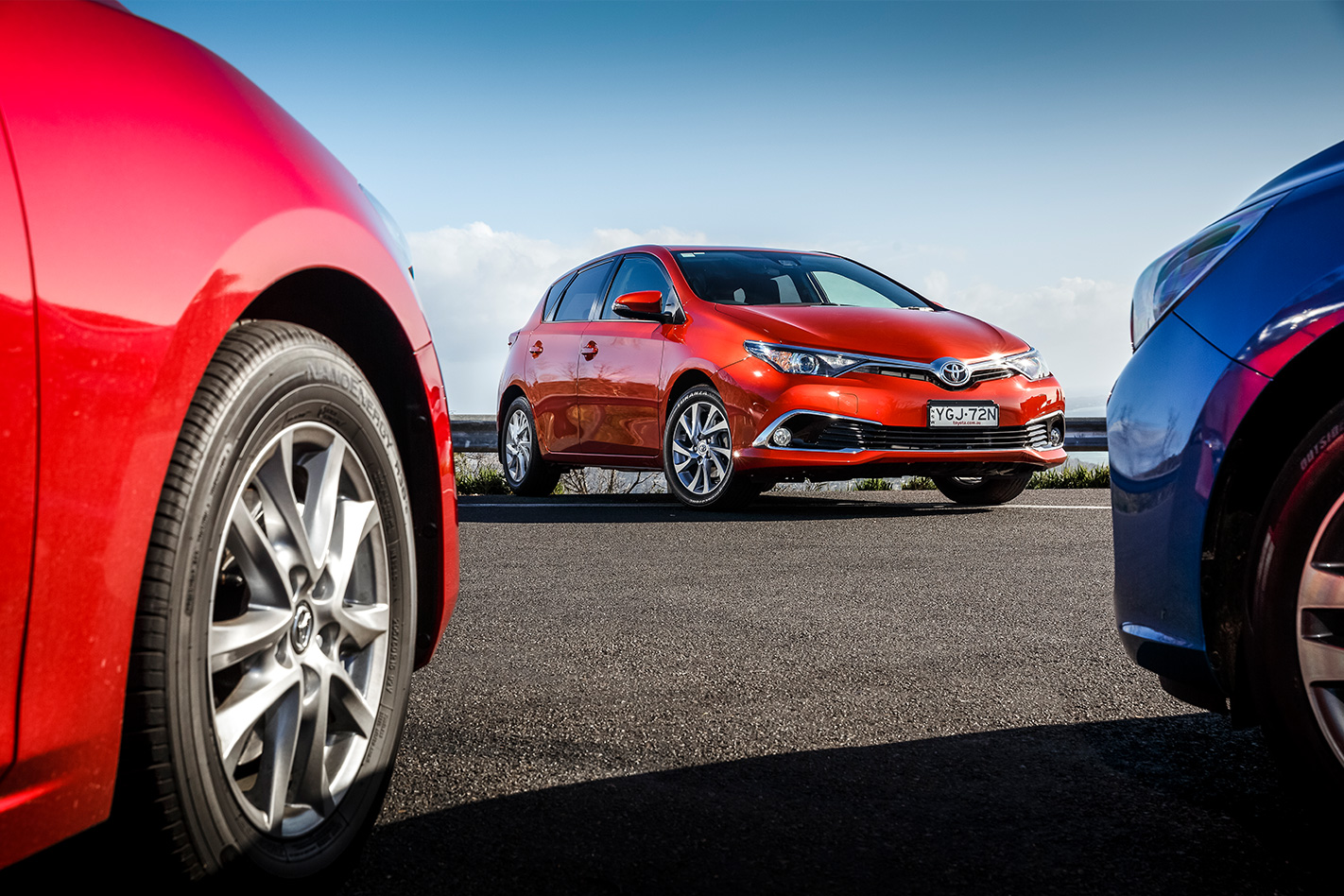
Bulk buys drive a significant number of Corolla’s sales; the government agencies, hire car companies and small businesses that bundle purchases together at a lower price than we see in the showroom.
Mum and dad buyers favour the $23,250 Ascent Sport, the second rung up in a five-model Corolla line-up that includes a petrol-electric mild hybrid. A sedan version is also available, but not in hybrid or our Ascent Sport hatch’s trim.
The Corolla hatch is about six years old, having received it last significant update in 2015.
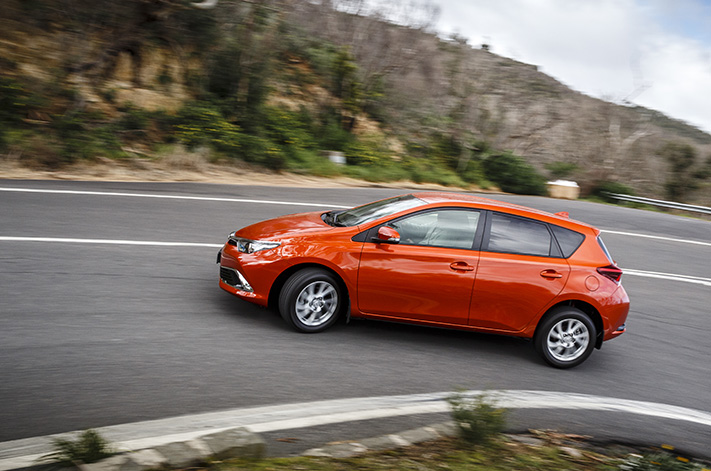
It will shortly be replaced with an all-new car built on the Toyota New Generation Architecture, which already sits under the C-HR small SUV and Prius hybrid hatchback, and will soon also sit under the new imported Camry mid-size sedan due late this year.
Inside
The Corolla Ascent Sport is a sharp-looking package on the outside, but crack open a door and you’re presented with a dark, drab interior with a few glossy black highlights scattered around. Much of the black material used to trim the cabin – some of it made to look like carbonfibre – looks and feels cheap, although soft-touch highlights are used in places you’d expect to notice it, such as the door arm rests.
The instrument cluster is basic, the leather-wrap three-spoke steering wheel is plain and features a faux leather-look hub, and a separate cruise control stalk hidden behind a spoke. The electronics look old; the monochrome digital parts of the dash – which lack a digital speedo – look more at home on a 1980s-era Casio calculator watch.
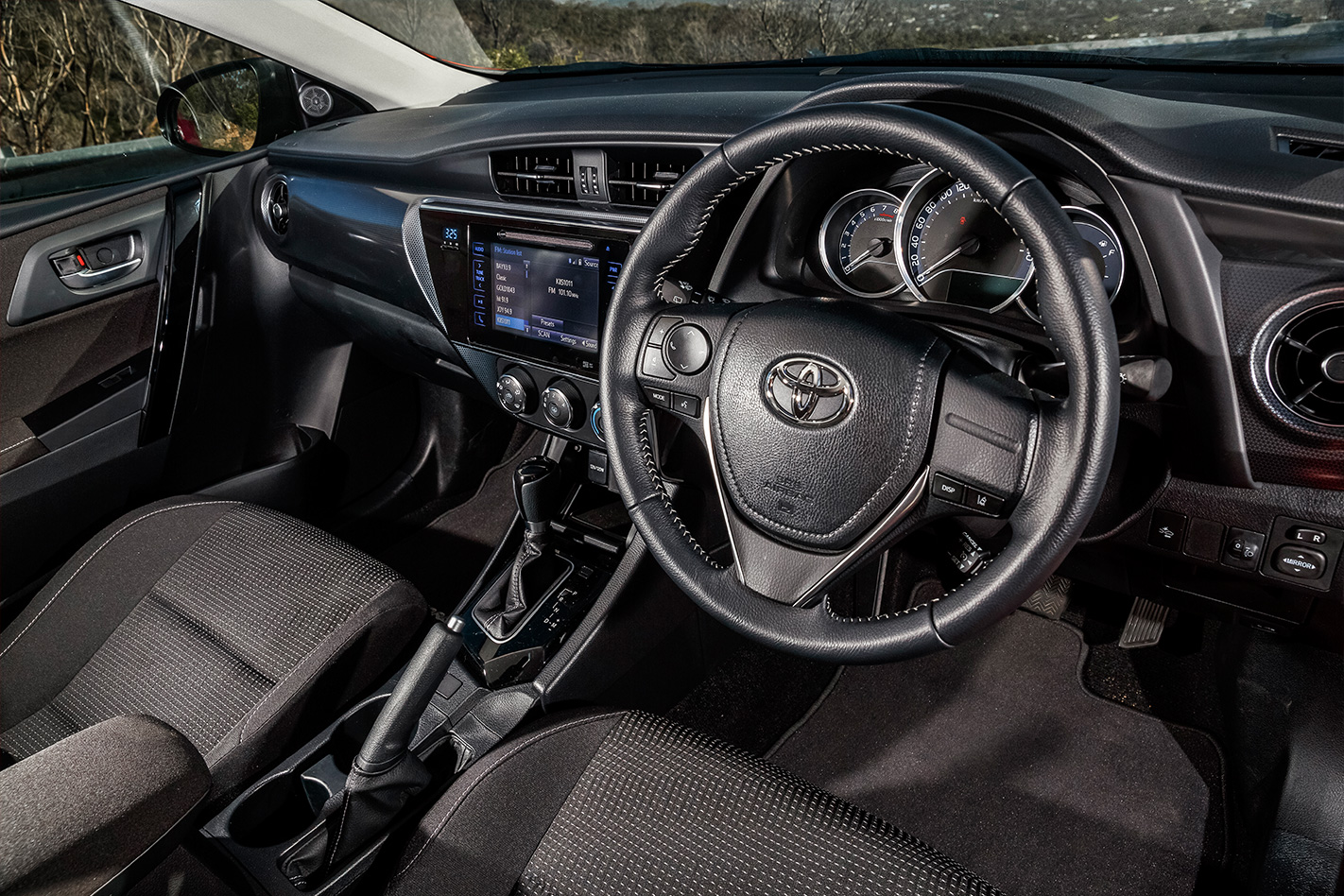
The driver’s seat is comfy and supportive, but the material that covers them looks and feels like woven plastic rather than material.
Storage space for a mobile phone or purse around the front of the cabin is somewhat limited, but a small storage cubby that drops down from the dash in front of the driver’s right knee helps. There’s also a small lidded box under the armrest between the front seats, a generous-sized glovebox, and the centre pulls out of the front cupholders to expand stash space.
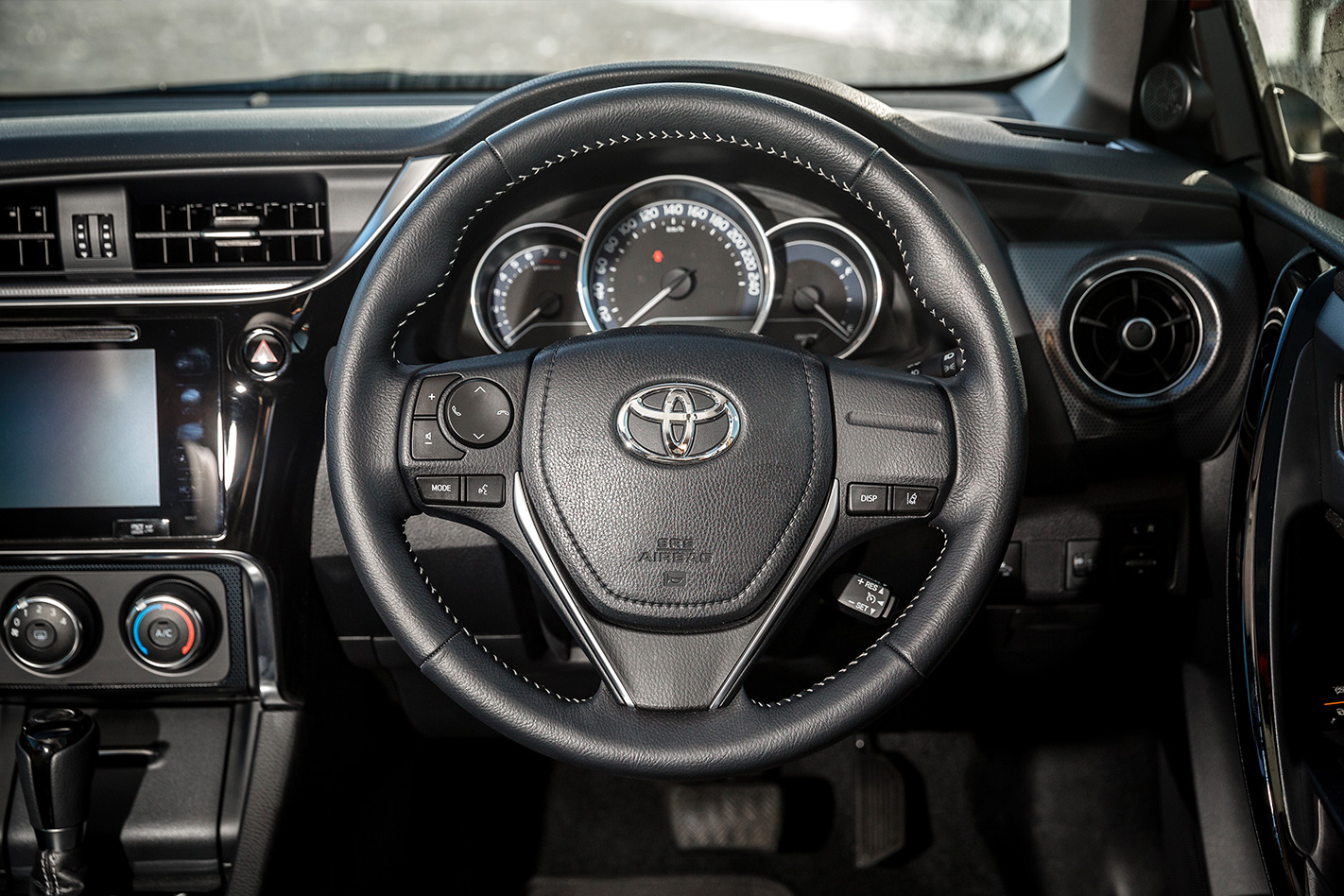
Another thing you’ll notice lacking in the Corolla’s interior is clutter – there are few buttons and dials scattered around it. The driver can adjust volumes and change tracks via steering wheel controls, but a passenger will find it much more fiddly via the low-mounted touch-sensitive multimedia screen that replaces real-world controls with virtual ones. However, despite having Bluetooth and a USB slot, the Corolla doesn’t support Apple CarPlay or Android Auto – a big miss in today’s digitally switched-on world.
In the rear, the Corolla is comfortable despite a high seating position. Like the front door pockets, the rear ones also get a generous-sized bottle holder, while a couple of coffee cup holders are recessed into the low-mounted centre armrest. There’s a 12-volt outlet on the back of the centre console in reach of the rear.
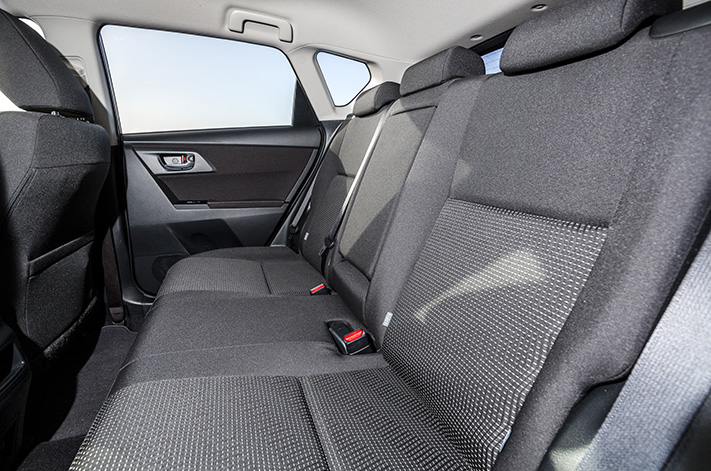
On the road
Tyre roar and stone splash from the Bridgestone Turanza tyres are constant companions, and more so in the rear.
The Corolla’s 1.8-litre four-cylinder engine produces 103kW and 173Nm, and gets more coarse the harder you accelerate as it sits in its power band, held there by the stepless continuously variable transmission. A sport button near the gear selector only amplifies this.
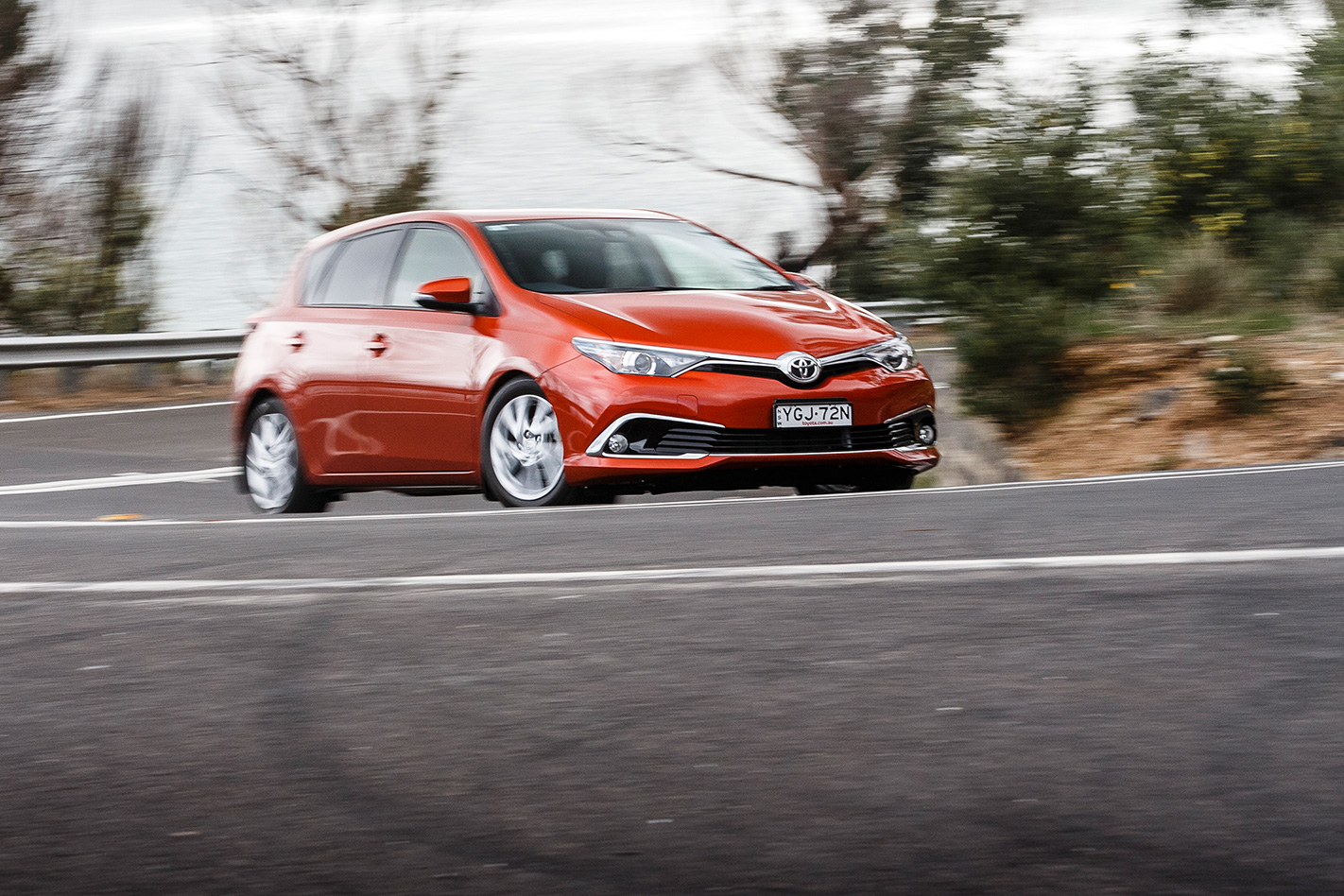
It was also the most fuel-heavy on test, drinking 9.6L/100km of 98RON premium unleaded fuel against an official 6.1L/100km.
The Corolla drives well, but the taut, almost sporty suspension has a hard edge to it on sharp bumps. Over some sections of road it also tended to porpoise, moving sharply up and down at opposite ends as the front and rear of the car worked against, rather than with, each other.
After sales costs
Capped price servicing for the Toyota Corolla costs between $233 and $350 every 10,000km, and the Toyota comes with a three-year, 100,000 kilometre warranty. That cap on the kilometres endows the Corolla the least-generous warranty cover of this lot.
MAZDA 3 MAXX
Mazda is only a strong month of sales behind Corolla in the race to full-year 2017 line honours, but it doesn’t really chase the sort of bulk deals that Toyota relies on to bolster its numbers. Strip things back to mum and dad buyers alone and, compared with the Corolla, it’s the best-selling passenger car that people, not accountants sitting behind computers, buy.
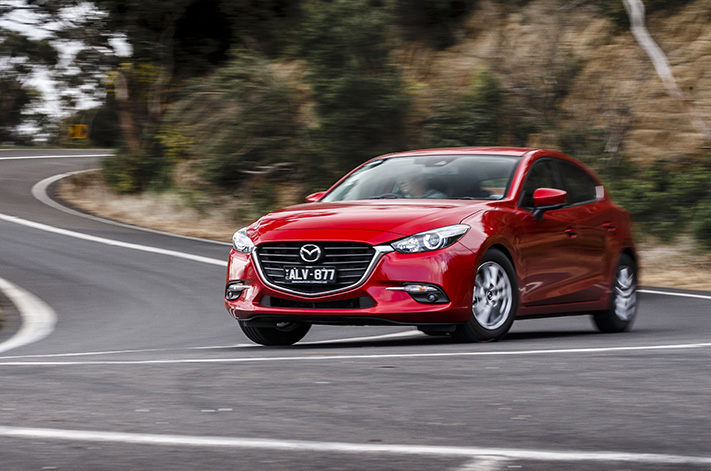
At $24,890, it’s also the most expensive here. It was introduced in 2014 and updated again midway through last year to include active city braking across its range, helping to either avoid or reduce the severity of crashing into the car in front.
There’s still bit of life left in the platform, so an all-new version could still be a couple of years away.
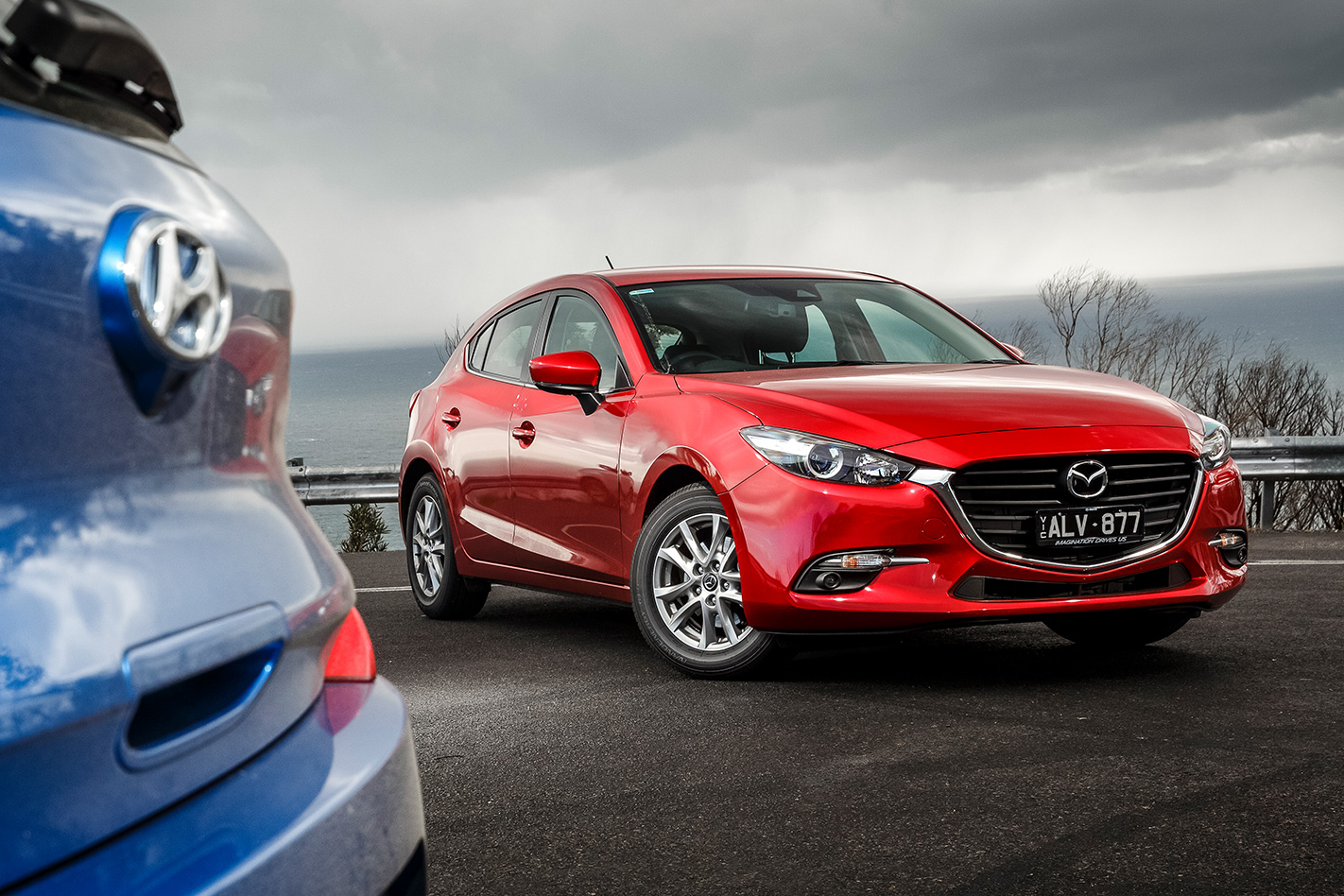
Inside
The three-spoke steering wheel is better than the Corolla’s, wrapped in leather and with both infotainment and cruise controls falling easily to hand. Behind it is a small instrument cluster, dominated by a central speedo, digital rev counter to one side, and fuel and information display to the right.
The interior, like the Corolla, is still dark, but there are many more soft-touch surfaces, and rather than being shiny the harder plastics – in varying shades of black and textures – have a softer look to them.
A highlight is a multimedia screen that sits proud from the centre of the dash, giving the cabin a premium lift as well as minimising the distance the driver has to move their eyes from the road. The controller for it is placed awkwardly between the front seats, ahead of a shaped soft-cover armrest hiding a small, shallow bin.
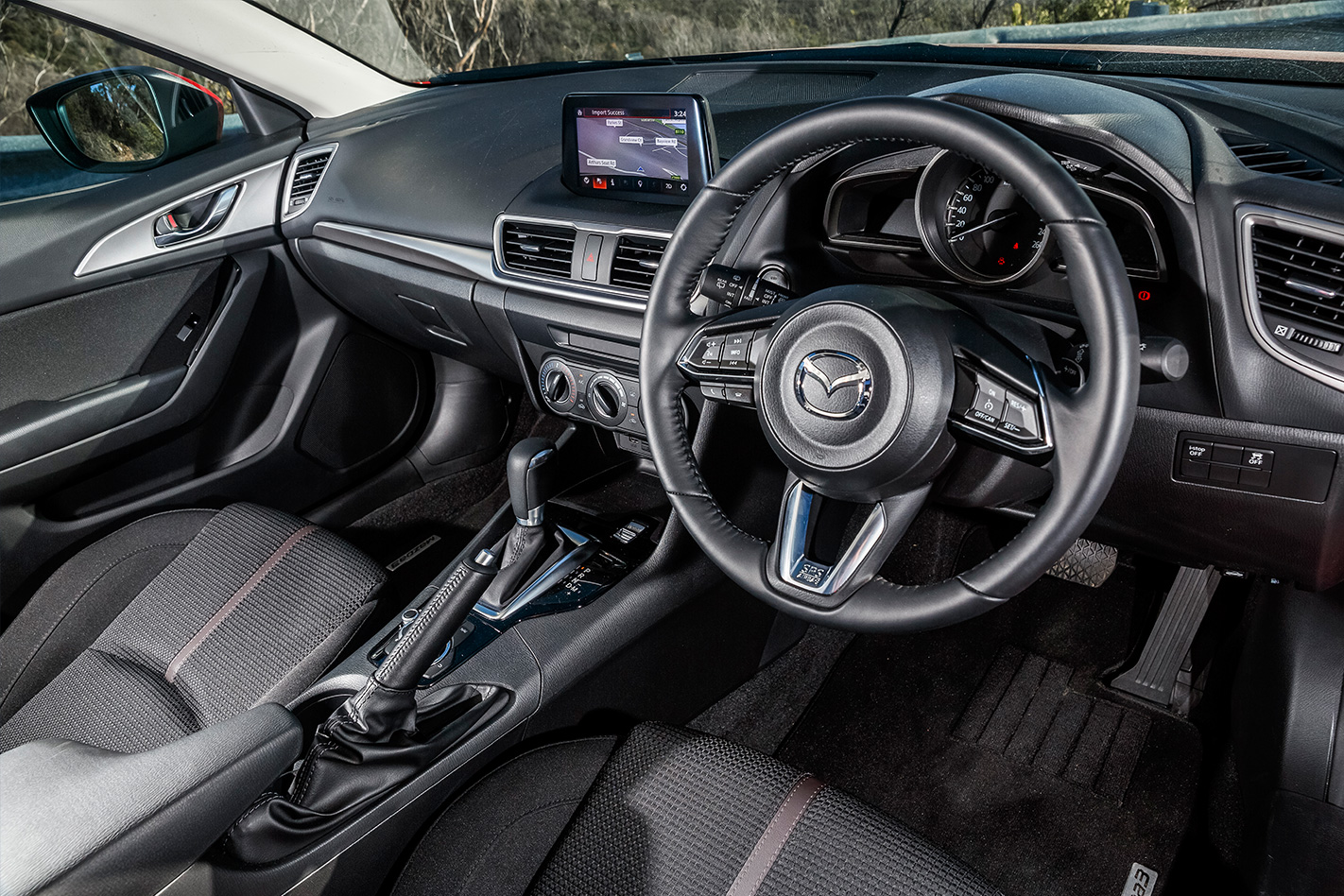
Oh, and the Mazda is the only car of these three to feature a start button rather than rely on a key, and an automatically dimming rear-vision mirror.
Like the Corolla, the Mazda 3’s dash is relatively button-free thanks to the console-mounted controller dial, but the traditional-look dials used to control the air-conditioning system are a stark contrast to the edgy cabin, and look a bit old-hat.
In contrast to the Corolla, the Mazda has a huge amount of small-item storage, including a deep recess at the bottom of the dash. If you like coffee, though, the cupholders are a long way back behind the gear selector and multimedia unit controller, and not that user-friendly. But there are two USB ports up front, not just one.
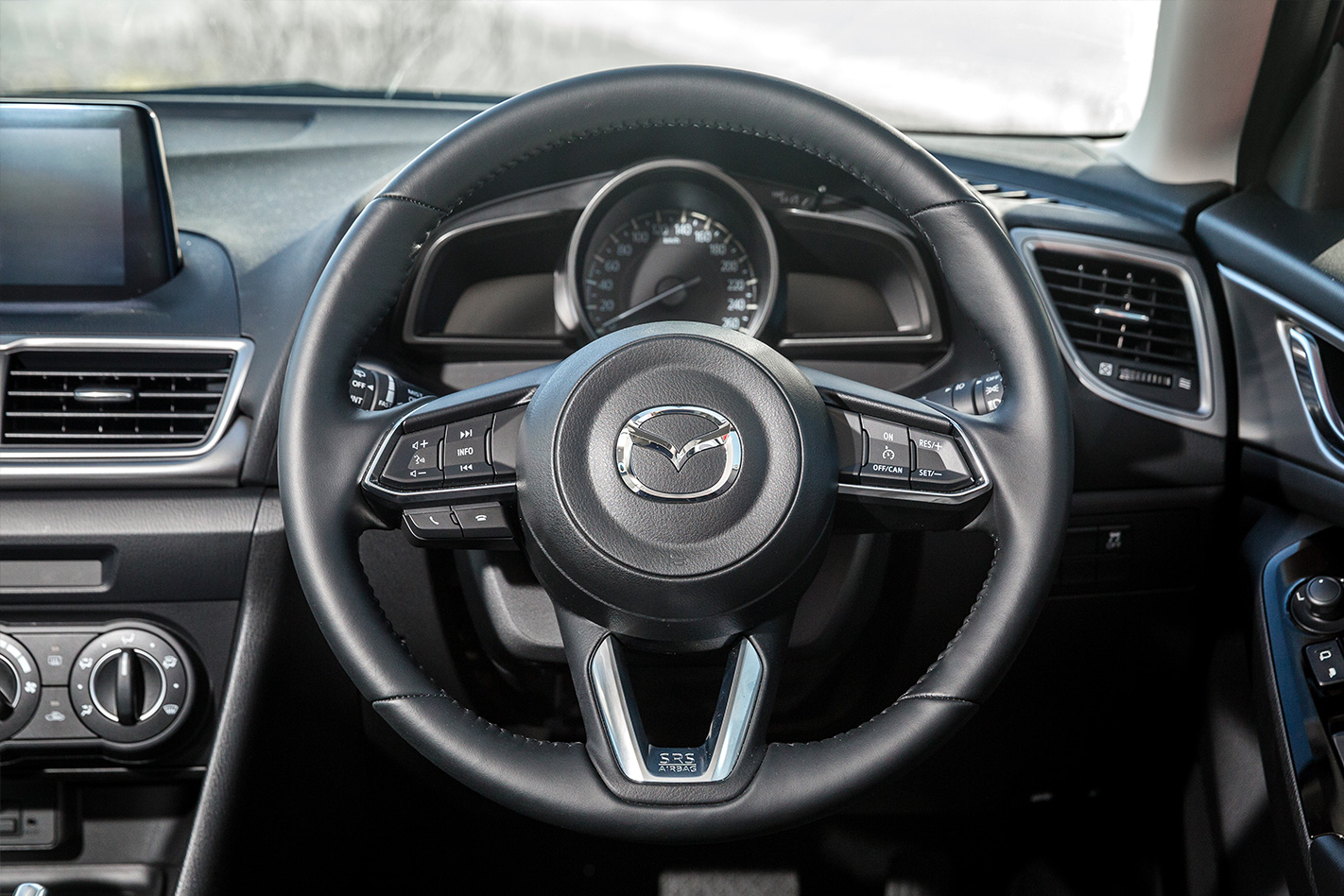
The Mazda 3 is the only car here to not have a light for the vanity mirrors hidden in the sun visors, and the only one to feature a leather-look plastic skin on the steering wheel.
Contrasting cloth front seats in the Mazda are narrow but well-bolstered and comfortable. Like the Corolla they feel as though they’re woven out of hardwearing plastic rather than material, although not as severely.
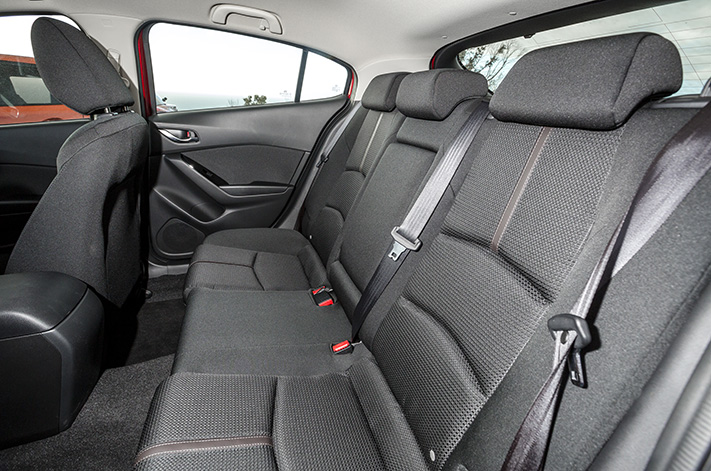
Passengers sit higher in the rear seats than in the Corolla, eating into headroom slightly and impeding vision out of the second row. Rear-seat storage is impeded by smaller door pockets, and a map pocket that’s only on the back of the driver’s seat, and not the passenger’s.
On the road
he Mazda 3 is quieter inside, the eco-friendly Toyo Nanoenergy rubber transferring less road noise than the Corolla’s rubber via a more sophisticated multilink rear end.
It drives like it’s a class above the Corolla, the 114kW/200Nm 2.0-litre Skyactiv engine perhaps getting a bit noisy high in the rev range, but adding a sporty edge as the six-speed auto flicked intelligently through the gears.
Accurate, decently weighted steering, a well-balanced ride and even paddle shifters tucked behind the horizontal spokes of the steering wheel bring a bit more engagement. On test, the engine used 8.2L/100km – the best result of this three – against an official 5.8L/100km rating.

After sales costs
Mazda’s fixed-price servicing program costs between $300 and $328 every 10,000km, and the warranty runs for three years without a cap on the number of kilometres travelled.
HYUNDAI I30 ACTIVE
Like the other two here, the Hyundai i30 has spent a bit of time at the top of the monthly sales chart, but namely on sharp $19,990 driveaway pricing for the old model that effectively gave away the auto for free. But that was the old car, and Hyundai is now backing a fresh new i30, priced in this configuration from $23,250.
A sharp-looking exterior is backed up with an impressive interior that’s not without its blemishes.
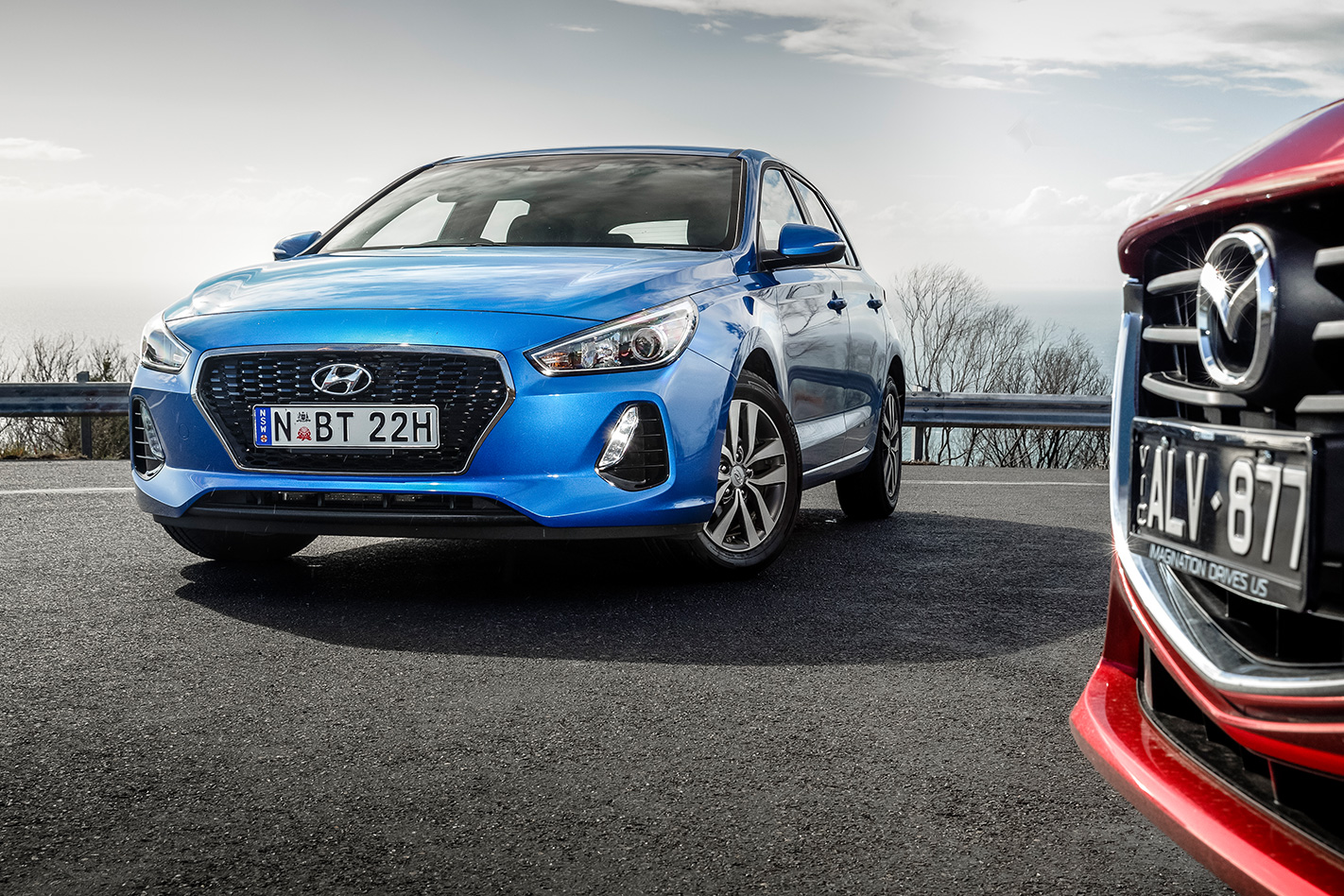
Inside
The Active’s interior is very dark with deeply black plastics only occasionally softened up using brushed aluminium-look highlights around the door pulls and air-conditioning dials.
It’s the only car here to get a moulded plastic steering wheel instead of more tactile faux-cow, and like the Corolla it lacks an auto-dimming rear-view mirror. But you’re prepared to overlook those mild flaws when you jump behind the wheel.
The instrumentation in the i30 is a league ahead of both the Corolla and Mazda.
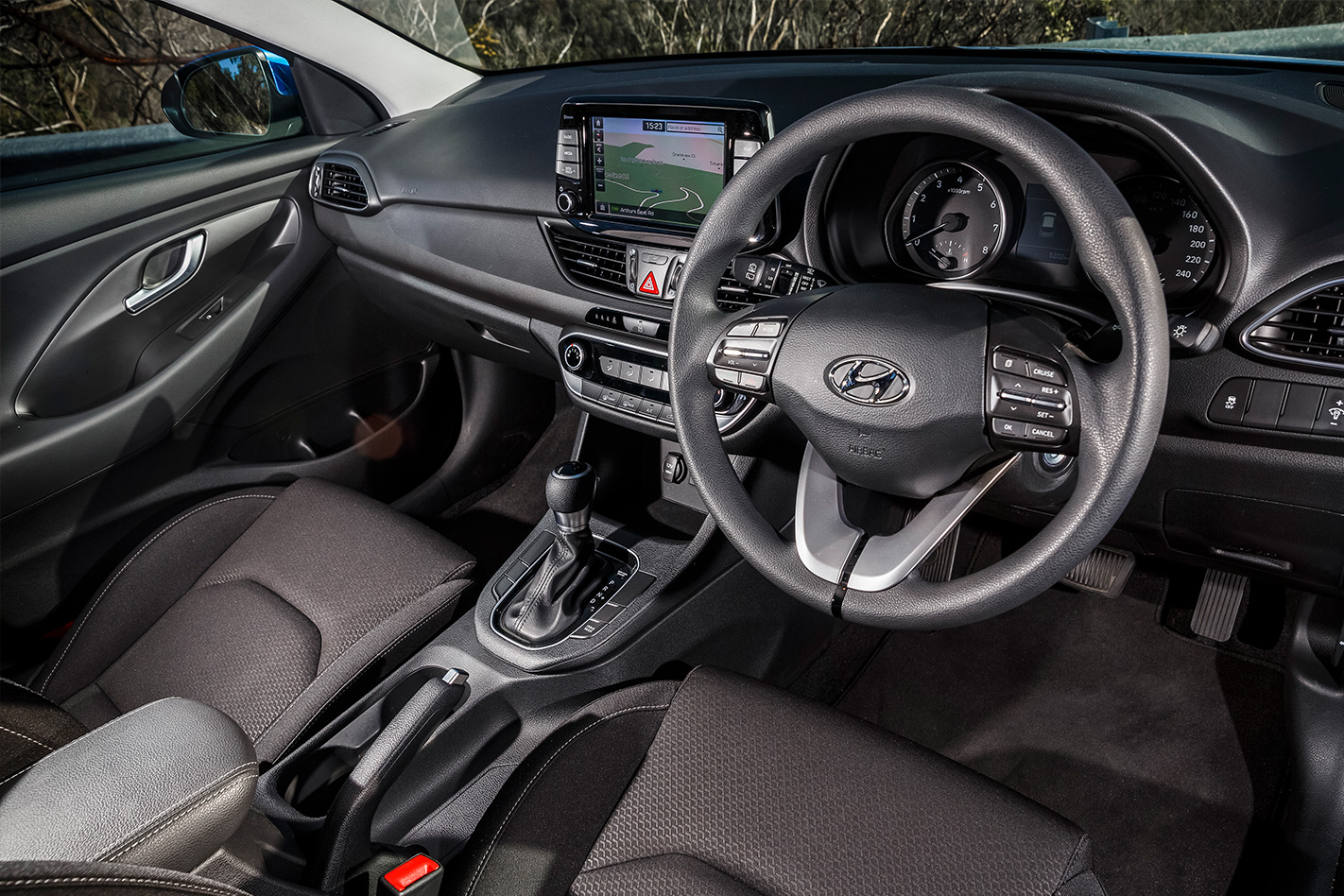
An analogue speedo and tacho frame a crisp, clear colour graphic display that includes an easy-to-read digital speedo.
Like the Mazda, the i30 has a black-framed multimedia touchscreen sitting like a tombstone high on the dash, but it also has a dial for volume control.
Meanwhile, you sit on soft-weave cloth seats that make the opposition here look like they belong in a mass transit design scheme. All-around visibility, and packaging, are better than the other two here. However, the i30 is the only one here to lack automatic city braking that can help you avoid running up the rear of the car in front if you’re distracted by, say, a mobile phone.
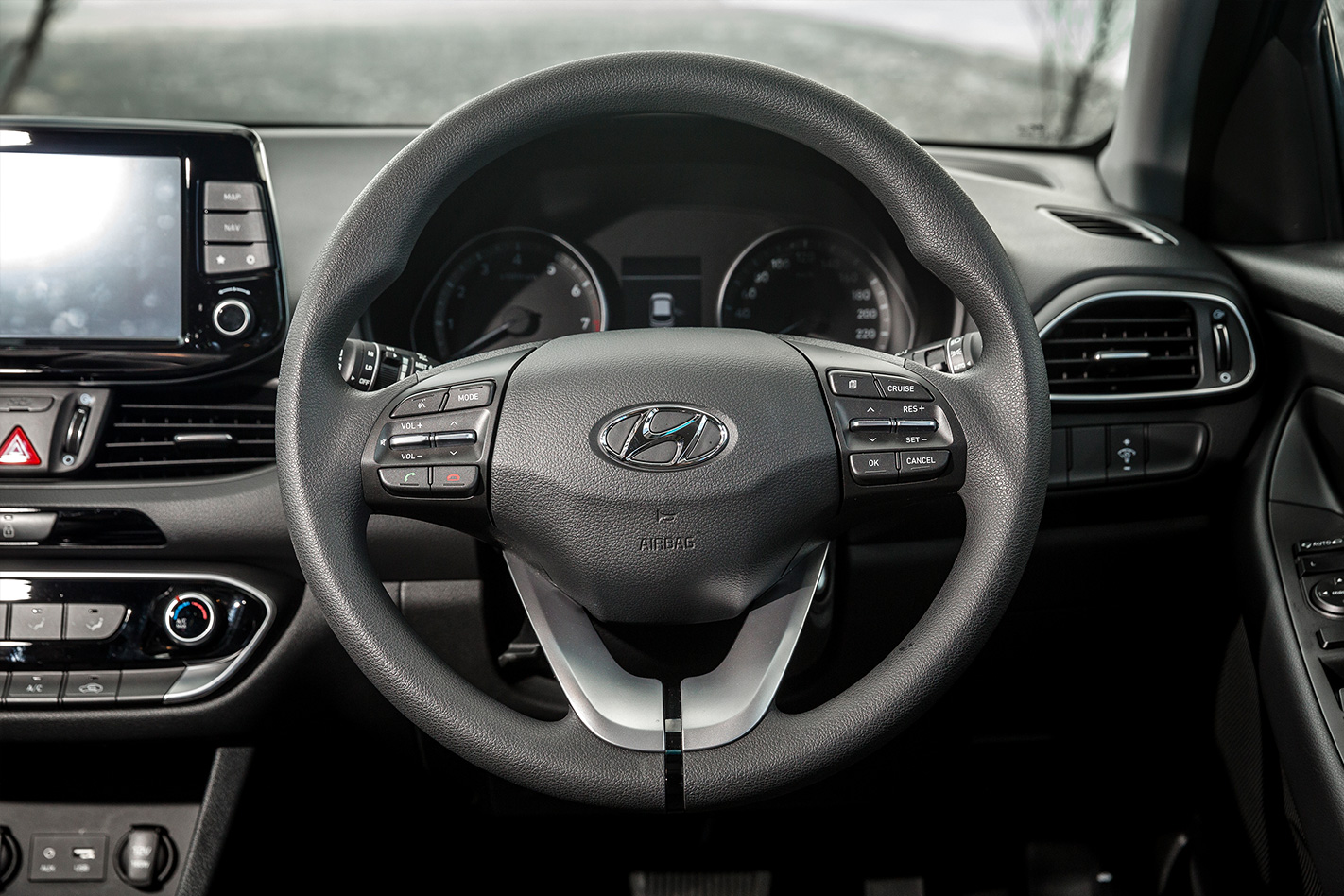
Occupants’ tech needs are well looked after, with a pair of 12-volt sockets, an auxiliary audio connection and USB port.
The rear seats use cargo nets instead of pockets, and their pews are deeper than the other two, comfortable, and with plenty of toe room, but testers sitting back there complained of a lack of support, and shin space as they rubbed on the seatback.
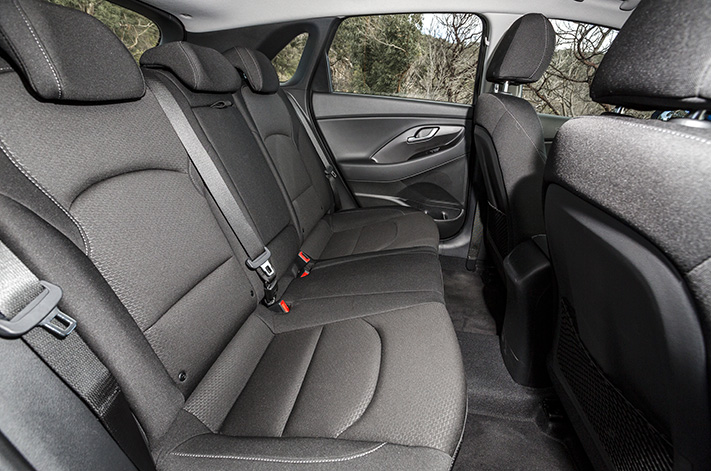
Its centre armrest was the highest on test, making it the most comfortable of the three for two adults.
On the road
The locally tuned suspension seems to hunt for middle ground between the Mazda and the Corolla. The low-speed ride on the lower-profile Kumho Ecowing tyres is a little jiggly, but at highway speeds things smooth out considerably, making it a bit like the Corolla; comfortable highway loper rather than an inner-city sprinter. A softer-handing torsion-beam rear will chuck rear-seat occupants around a bit more than compared with the Mazda.
Steering is good with decent Mazda-rivalling weighting, although the six-speed auto is a bit dozy compared with the sharper 3 as it refuses to kick down while accelerating, holding gears for as long as possible and lacking the engagement of the Mazda.
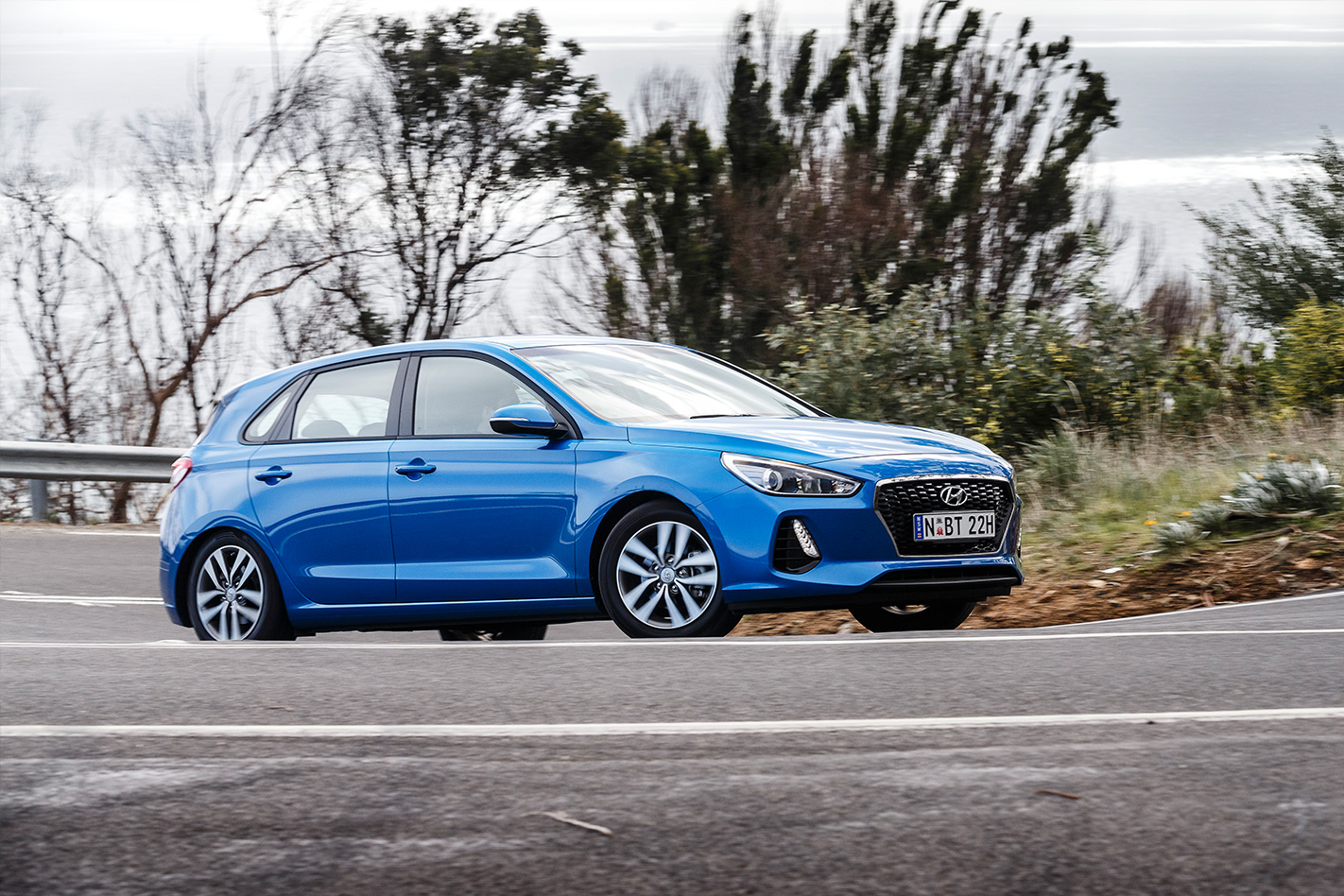
The quiet, torquey engine, a 120kW/203Nm 2.0-litre four-cylinder unit, is the most powerful on test, although surprisingly it didn’t return the worst fuel use figure; 9.2L/100km compared with the official 7.4L/100km.
It feels decently torquey right across its range, and we’d rank its overall performance ahead of the Mazda through the more twisty sections of road.
After sales costs
Hyundai’s fixed-price servicing costs $269 every 10,000 kilometres. Nothing here comes close to the i30’s five-year, unlimited-kilometre warranty.
The verdict
It boils down to ride comfort. Unfortunately, the Corolla’s sports-tight suspension – not normally an identifiable Toyota trait – rules it out of contention, along with the weakest warranty, Novocaine levels of driver engagement and lacklustre comfort. It’s an early shower, unfortunately.
The Mazda did well, but compared with the Hyundai, it didn’t quite go the distance.
The Hyundai’s performance is barely ahead of the Mazda 3 on paper, but it just feels better suited to daily commuting, with the low-down torque impressing exactly where it needed to if you’re stuck in peak-hour traffic.
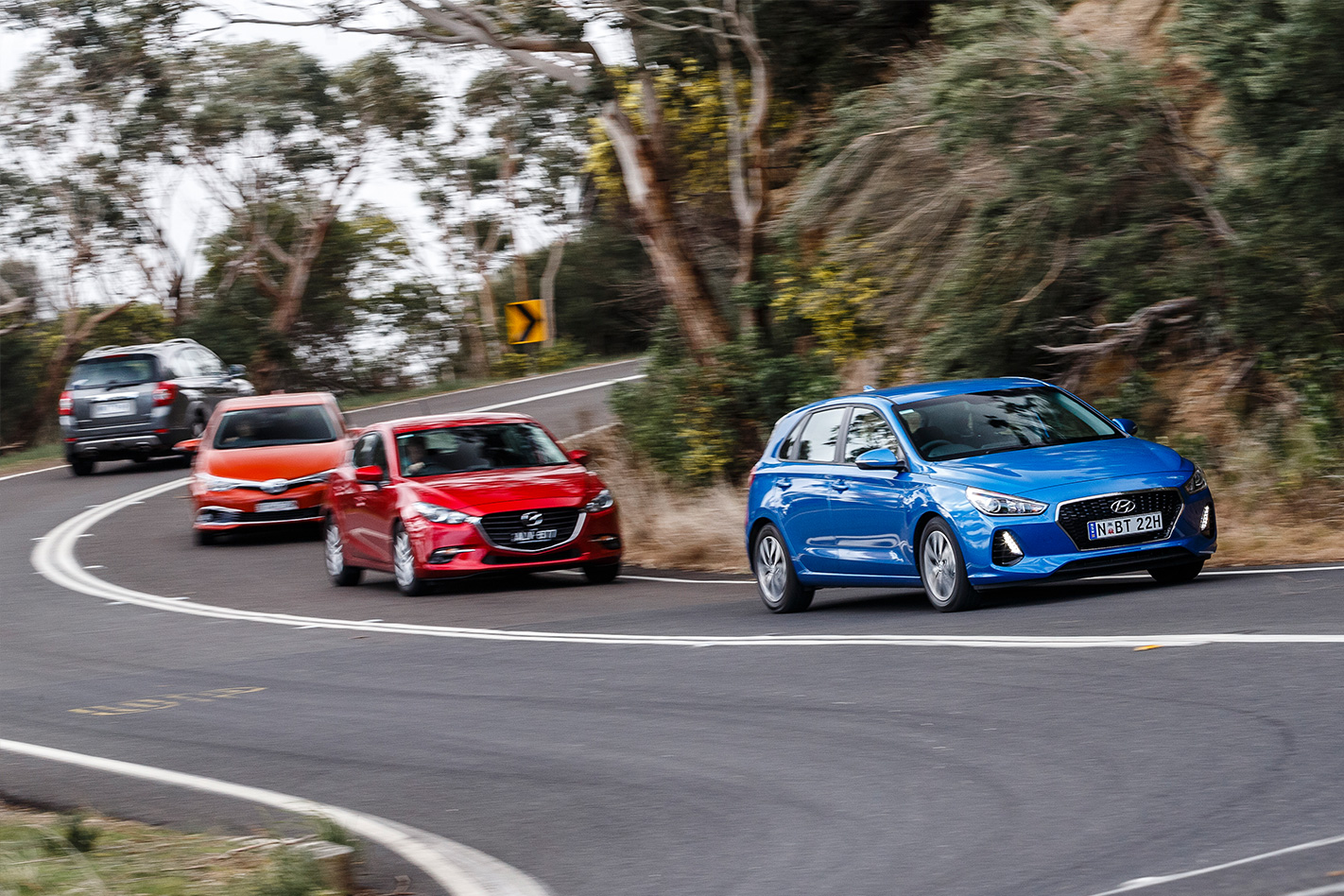
Holding gears longer will help on the commute, too, but the lack of AEB and multilink rear suspension and the mean plastic steering wheel won’t – you’d have to spend $28,950 for the 1.6-litre turbocharged i30 SR before these come into the equation.
And that long warranty gives bucketloads more confidence than its rivals, and more so if you’re keen to flip it after the first three years of ownership – a couple of years of leftover warranty is a strong drawcard for a second-hand car buyer.
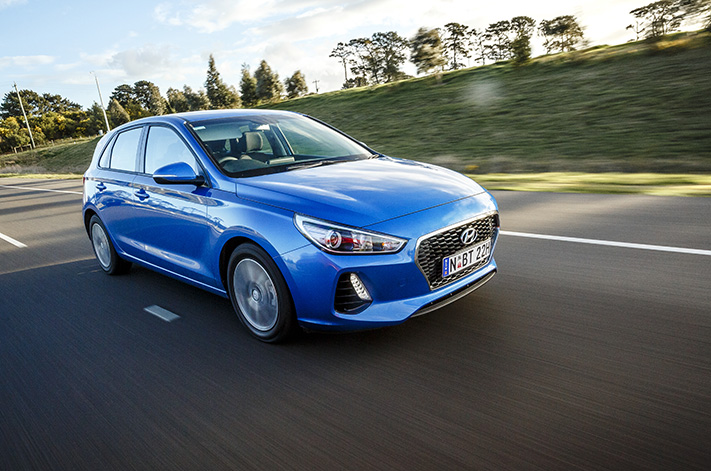
The lack of AEB doesn’t really hurt the i30 – just like the other cars here it scores a top five-star crash rating – and it was quoted the cheapest for insurance by a margin of about $80. That means in WhichCar’s eyes the i30 is the best of the big-selling cars here on the weight of all its strengths, and not its individual weaknesses.



